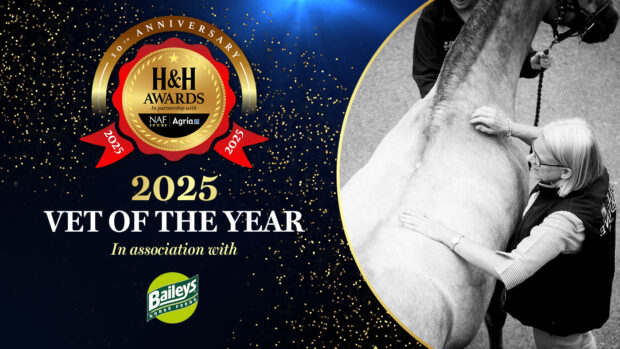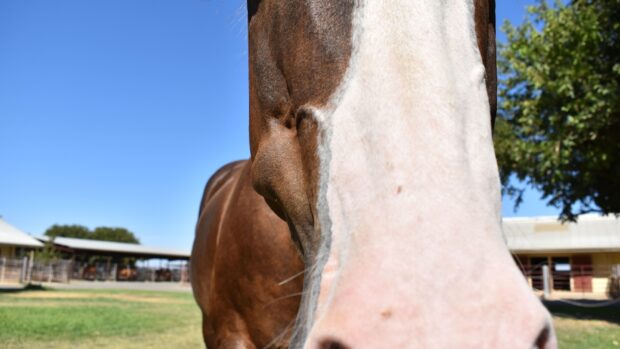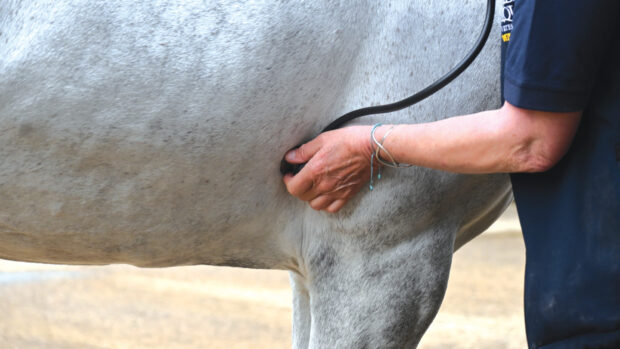It has been a good week to be a horse vet — the sun was shining at last which made working outside a real pleasure after the long winter.
My week started with a trip from Yorkshire to Cheshire to gastroscope a horse with performance issues. All my equipment is completely portable, meaning I can visit other equine practices that don’t have access to the necessary 3m long endoscope (an expensive but vital bit of kit able to directly visualise inside the horse’s stomach).
In this particular mare the ulcers were low grade. However, all horses react differently, with some being much more sensitive than others. A course of treatment to suppress acid production was advised and it will be interesting to see how this mare responds.
I had several more horses to gastroscope later in the week; one was an elderly mare with recurrent colic. She had a really healthy stomach on gastroscopy, but significant dental disease, meaning she was unable to chew long fibre such as hay and haylage effectively. This impacts further down the intestinal tract as poorly chewed long fibre is more difficult to digest and can lead to problems such as impactions and weight loss.
I discussed various feed and management options with her owner — particularly changing to high fibre feeds designed for horses with poor dentition, plus avoiding long fibre and ensuring she has as comfortable a mouth as possible. This means regular dental care and the use of painkillers as necessary.
My other gastroscopy case had recently suffered weight loss and diarrhoea. After endoscoping his stomach, I ultrasound scanned his abdomen to assess the intestines, as well as collecting a biopsy of intestinal mucosa. There were some mild ulcer changes, so we’ve started treating those while we wait for the biopsy results.
My final case of the week was a pony with a heart murmur. It’s always a concern for owners when the vet discovers an unexpected murmur, but they are more common than people think and in many instances are not significant. Ultrasound scanning of the heart is the only way to fully assess the murmur and determine its significance. Luckily in this case I was able to reassure the owner it was nothing to be concerned about.
It was lovely to deal with a really well-behaved pony too. In fact, all my patients this week have been models of good behaviour, which makes my job so much easier! Next week I’m off to Chatsworth as one of the duty vets. After the disappointment of last year’s cancellation it should be a great event.
Stay up to date with Rachael’s weekly highlights as she travels throughout the north of England providing specialist support to equine practices in the region.



